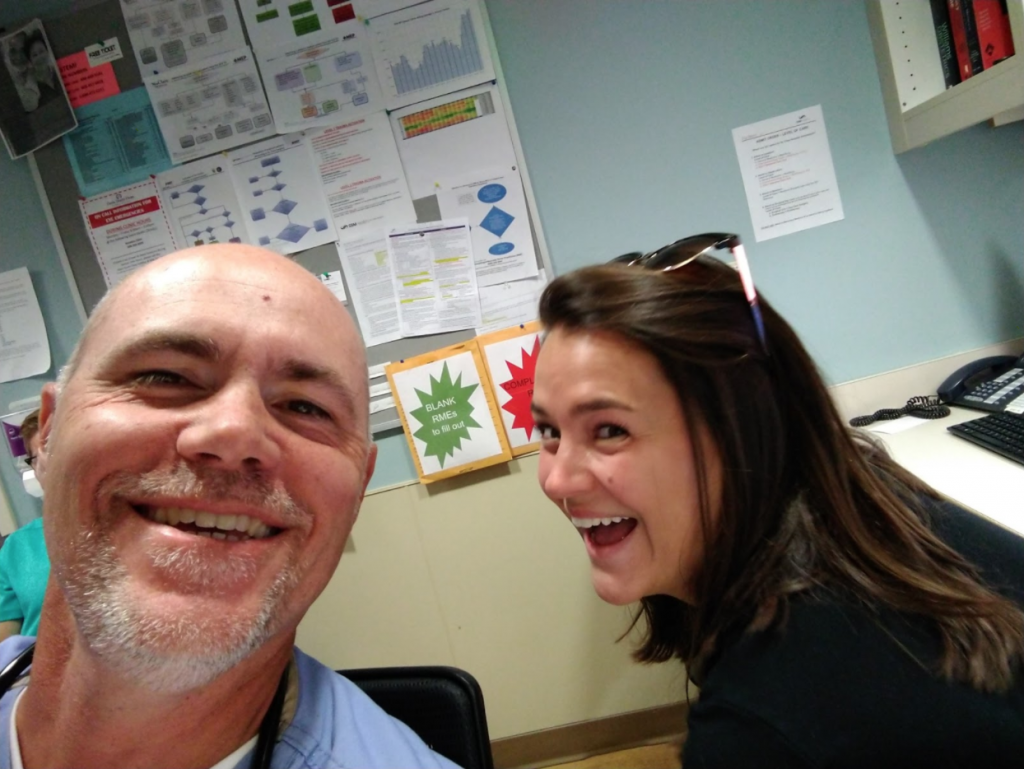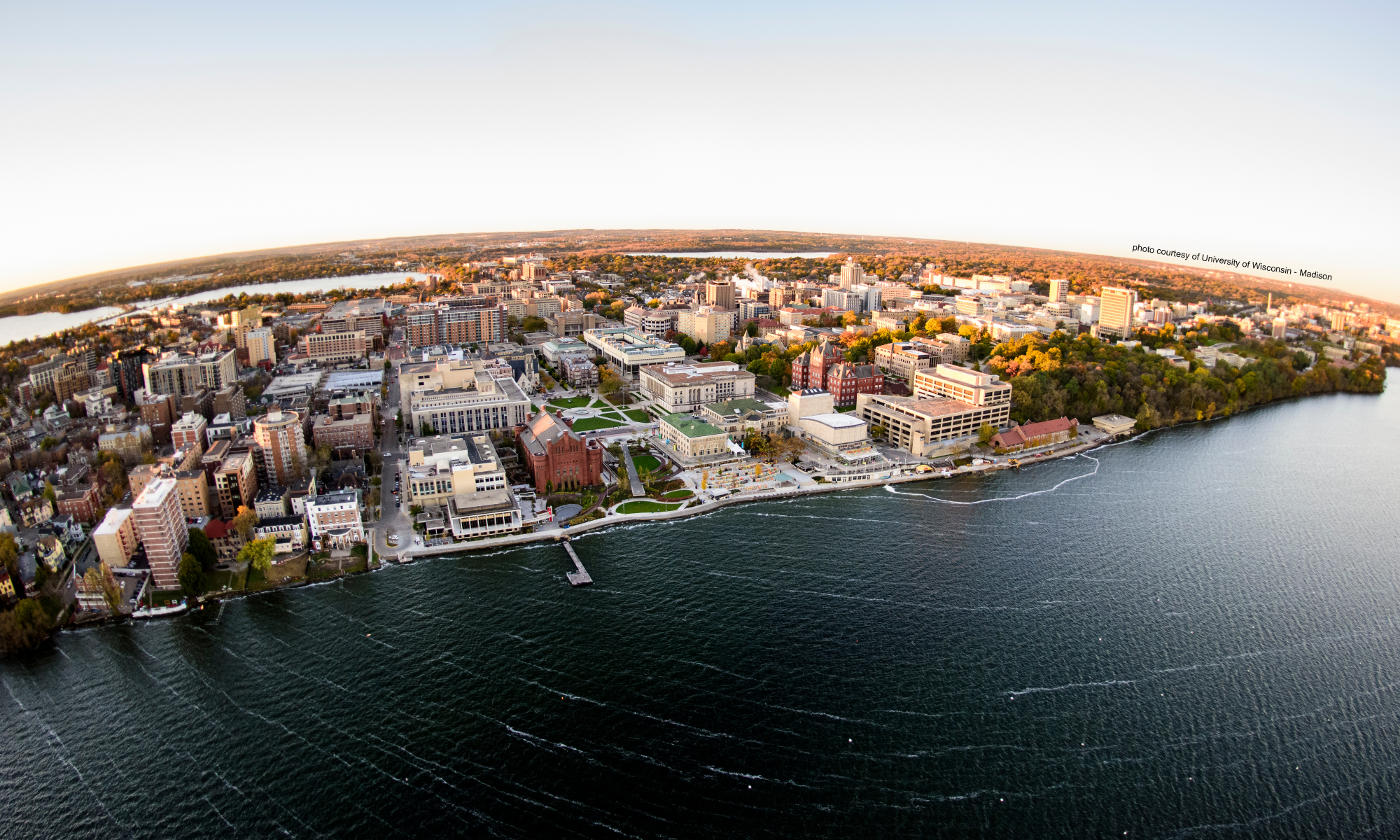The COVID-19 pandemic is forcing Emergency healthcare workers to adapt as professionals and as family members
By Nick Rawling

For most of us, the COVID-19 era has meant spending the bulk of our time at home, isolated from the threat of infection. Social distancing measures have provided time for reading a book that’s been laying around, trying unsuccessfully to bake or watching Netflix shows about breeding big cats.
But some of us still have to go to work. For Madison-area emergency medical staff, this means risking their lives every time they clock in to try to keep this pandemic in check.
Although Wisconsin has been spared the brunt of the mayhem wrought by the novel Coronavirus so far, doctors and nurses have still had to adapt, not only as professionals but in their lives at home.
For Amber Rickman, a registered nurse in the Emergency Department at St. Mary’s Hospital in Madison, the biggest change has been the increased use of personal protective equipment (PPE). This means wearing a disposable gown, gloves, a respirator mask and a face shield regardless of the patient’s chief complaint, she explained.
“All of these items are designed to be one-time use, but as of right now I’m reusing my face shield and my mask,” Amber Rickman said. “I’m only allowed two masks in a given work week, so the idea that we could run out is real.”
For obvious reasons, she is worried about the possibility of PPE supplies being exhausted.
“I cannot imagine what it would look like, and I’m trying really hard not to imagine that day,” Amber Rickman said.
Besides PPE, the equipment emergency medical staff need most during this crisis are tests. Jon Rawling, an emergency physician with Madison Emergency Physicians, said that while testing capabilities have drastically improved since the start of the pandemic, he would like to have more tests.
“We don’t know a lot of times, because there’s a lot of things that manifest with shortness of breath or fever,” Rawling said. “The lack of rapid and reliable testing increases the level of uncertainty and anxiety that goes with it.”
Despite increased use of PPE and better testing capabilities, this uncertainty and anxiety is shared by Rawling’s colleagues.
Amber’s husband, Christian Rickman, is an emergency physician at St. Mary’s Hospital in Madison. He said that one of the biggest changes for him since the outbreak has been a looming worry that one of his patients could get him sick.
“[We] go to work, and we accept the risks,” Christian Rickman said. “It never really crossed my mind that I’d be going into work with something like that hanging over my head.”
Rawling feels that stress too, especially because he is his family’s only source of income.
“I’m worried about my ability to maintain income for my family,” Rawling said. “Because if I get Covid, I potentially miss a couple weeks of work, maybe even a month or more depending on how long I have symptoms.”
This anxiety is warranted. Health care workers account for at least 14% of Wisconsin’s 7,314 COVID-19 cases, according to the DHS.
At the end of March, this fear almost became a reality for Christian Rickman after he was told he had to self-quarantine because he’d been exposed to a patient who tested positive for COVID-19.
For more than a week after he got the news, he had to sleep and live in his basement, away from his family. Luckily, Christian Rickman never developed symptoms and only had to spend eight days in self-quarantine before returning to work.
“It was a stress on the family, which I think was certainly bigger than the stress on work and my partners,” Christian Rickman said. “My partners were really quick to trade shifts. I ended up not really needing to lose too many hours.”
For Amber Rickman, one of the difficult parts about Christian Rickman’s quarantine was explaining the situation to their young children.
“We were able to provide information for the boys, which I think was really important and really helpful,” Amber Rickman said. “We were able to tell our sons ‘hey, we can’t hug and kiss Daddy like we normally do. Let’s practice our air high fives.’”
Even those who aren’t sure they’ve been exposed to COVID-19 are not leaving anything to chance. Amber Rickman and Rawling are both showering and changing before interacting with any members of their family when they come home from their shifts.
Under normal circumstances that would never happen, Christian Rickman explained.
“When I come home from work, normally I’d play with the kids, sometimes wouldn’t even change clothes, give them a hug, go play sports, do whatever,” Christian Rickman said. “But now they can’t get within 6 feet of us when we come home.”
While the healthcare professionals I spoke to are taking this situation very seriously, some Wisconsinites are not acting as carefully.
On April 7, Wisconsin went ahead with in-person voting during their spring primary election despite warnings from experts. Rawling didn’t believe this was a wise choice.
“The six foot distance is not necessarily a perfect precaution, and at that time cases were still steadily increasing in the state of Wisconsin,” Rawling said. “It just added risk to anyone involved in the polling process or anyone who set out to vote outside of a mail-in ballot.”
As of April 21, seven cases of COVID-19 have been linked to activities related to that election, according to the Journal Sentinel.
Despite this, some Madisonians believe that Gov. Evers’ stay-at-home order is too harsh. On April 24, thousands gathered outside the Capitol to protest the order.
While Rawling, Christian and Amber Rickman all told me they sympathized with the protesters to some degree, Christian said the protests could ultimately be self-defeating.
“If [re-opening the state] is ultimately the goal, then continuing on with social distancing, self-quarantine, those kinds of things, for a relatively limited time up front to open things up more widely on the back end may ultimately be the best way to accomplish that,” Christian Rickman said.
Though Amber Rickman said the protests were unsafe, she also said that she believed it may be time to start opening back up in phases.
“I think we can start to open things up and test the waters. I mean at some point, you have to,” Amber Rickman said. “Do I think we’re looking at big sporting events anytime soon? No. But do I think we can get back in the restaurants and our hair stylists? Yes I do.”
Rawling agreed with that sentiment, but cautioned against opening things up too quickly.
“The fact that we’ve been able to limit the number of deaths and hospitalizations is good, but that doesn’t mean that we should underestimate [COVID-19],” Rawling said. “It’s an indicator, I think, that what was done as far as stay-at-home orders and social distancing has made a difference.”
From this, it seems like there might be light at the end of the tunnel. Even still, in an era defined by contradictions and uncertainty, Amber Rickman emphasized that we must proceed thoughtfully.
“Please adhere to the recommendations from those with a medical background. Please listen to what those folks have to say,” Amber Rickman said. “Your epidemiologists, infectious disease physicians, your healthcare workers, your laboratory folks. These are the people that are qualified to speak about this particular issue. Trust what they have to say. Please go by their guidelines.”
